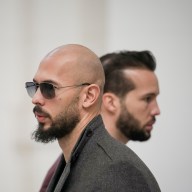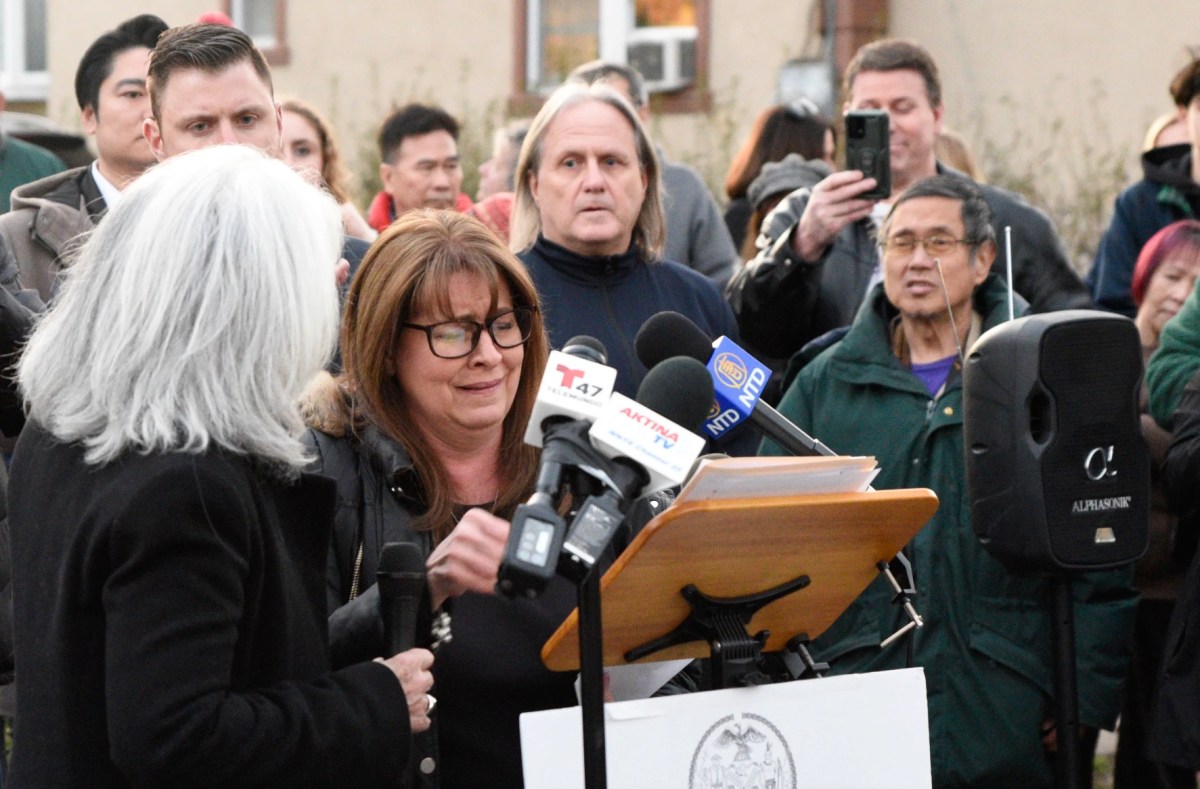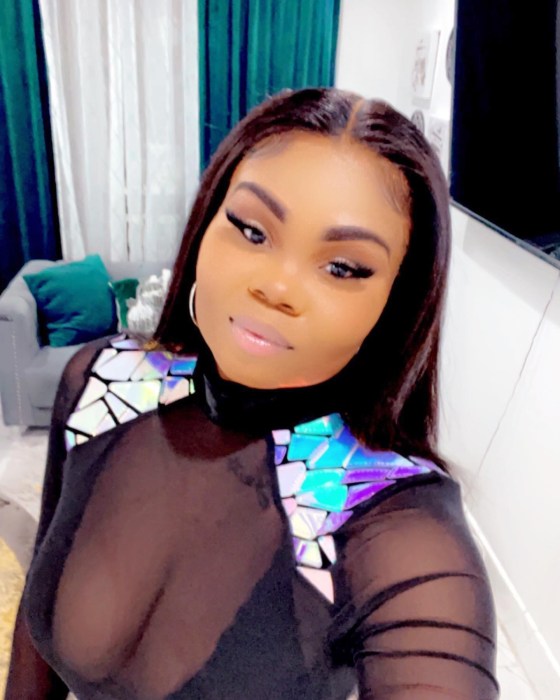The walls of the Sacred Gallery are covered in blood, but of greater concern to those in attendance is the diminishing sangria supply. After all, the blood on the walls is supposed to be there, as it comprises artist Vincent Castiglia’s body? of work (pun intended) in his retrospective exhibition, ‘Resurrection’.
Castiglia, a New York native and LaGuardia alum, creates art from his blood. Using a careful methodology — one he revised after suffering a collapsed lung in 2008 — Castiglia draws and collects his blood to compose his art, or as he refers to it, his “hemorrhages.” “Some people pray to connect with whatever they feel is beyond them,” he says, “and this is how I pray. These are my prayers.”
Walking through “Resurrection,” a cursory glance leaves a few impressions. First, the volume of work, and liters of blood involved in its genesis, is largely dedicated to morbid imagery, including decaying bodies and pseudo-demonic figures. Castiglia contends that the morbidity is a way for him to “exorcise” harried experiences from his past.
However, thinking about his work as macabre strikes Castiglia as reductive. The juxtapositions between life and death, nature and man, provide a form in which he can accomplish a “transference of negative energy into a place that is contained and processed,” meaning that while the product may be dark, its effect on the artist is ultimately curative. A second impression? Dude loves metal.
“Resurrection” also showcases Castiglia’s work on horror movie posters and album art, as well as some living, breathing recipients of his virtuosic tattoo work. As a protege of Swiss surrealist H.R. Giger, most famously known as the artist mastermind behind the “Alien” movie franchise, Castiglia flaunts some legitimate cred in this darker corner of the art world. It’s certainly a bloody fantastic show for the Halloween season.
Interview with Vincent
Q: Let’s start with this current exhibition. It’s called ‘Resurrection’. A good deal of your work, as you’ve stated, deals with juxtapositions of life and death, nature and humanity, are you exploring new ground with these pieces or is it a deeper exploration of those juxtapositions?
A: This collection of work is actually a retrospective. There is one brand new painting in the show, but the bulk of it all is work over the last decade.
Q: I guess that makes sense with a name like ‘Resurrection’. That includes some of the stuff that you had over in the Giger museum in Zurich?
A: Yeah a lot of the work that was – in fact, mostly all of the work that isn’t now in collections already from the Giger museum is being shown here for the first time in the US.
Q: That’s really exciting! I know that you were the first American artist to show in his museum, and now this is the first time America gets to see some of this work, too. And on your own home turf! You went to LaGuardia High School, correct?
A: Yeah, I did go to LaGuardia.
Q: They’re known for their great arts programming.
A: It was an amazing experience and the art programs there were really intense and I definitely got a lot out of it just in terms of how immersed I was and through the discipline it takes, just as a high school student, to be in that kind of environment. I really excelled in all of my art classes. But, because there was such a heavy stress on academic performance, I didn’t function as well academically as I did artistically, so I wound up kind of falling behind at that point. I did go there for three years and wound up getting my high school diploma elsewhere, but it was an amazing experience
Q: Having an artistic education that you’re really devoting your time to is challenging at a young age, since so many people think of it as just an additional encumbrance on more classical schooling. Seems like it worked out though! You’re known for your tattoo work. I realize that the exhibition is for your paintings, but are you expecting a lot of the NY tattoo community to come in, too, or possibly any of your tattoo recipients?
A: For sure, Sacred Gallery is pretty intimately connected to the tattoo community, and I have a lot of tattoo artist friends, so I do expect it to get a lot of exposure in the tattoo community.
Q: It makes sense that H.R Giger had so much to do with your development. His bio-mech art is explores juxtapositions between machinery and biology – similar to your work – and I was wondering if that something that you share a philosophy about with him?
A: You’re the first person to really ask that question and made that connection and I’ve wondered about that before – whether it was something deliberate. I’m not sure that it was anything conscious but a lot what floats freely from me does concern juxtaposition in a similar way. I guess because the magnitude of what he’s done and how strong the work is and how incredible the work is… I could say it definitely inspired my work in that way
Q: I’m sure you’d agree it takes a degree of bravery to bring such intense imagery to life, literally in your case considering the medium your using, to invoke these pieces of art that are so intense. You’re committing living tissue to these projects. Do you compose art that isn’t from exsanguinations or is your work primarily blood paintings?
A: I draw and that would be I’d say the only artwork I’m making outside of the blood medium, either pen or graphite. Actually, I did work on a sculpture this year, it’s brand new in the show, I’m excited about putting that forth, because once again its another strong, well I believe a strong piece and very much a part of me. You used the word ‘invoke’ and it’s really poignant way to think about this work. It’s not like I’m just making art.
Q: Absolutely, and that makes me curious about what sort of theological elements might be at play. Are there any sort of religious or mystical beliefs you’re utilizing in your work, directly or indirectly? Or is that a reductive way to frame. A lot the imagery has, I won’t say religious and mystic kind of sounds cheesy, but there’s definitely a ritualism to composing intense artwork with your blood. Is there was an overarching ethos behind that
A: Yeah if I had to sum it up and speak just concisely about what you’ve just asked some people pray that’s how they connect with whatever they feel is beyond them, this is how I pray, this is my house of worship. It’s that powerful and that important to me, and it’s why I’ve done it for as long as I have and have done it to the extent that I have. It’s very much how I find my own peace and how I understand the world and process it and put into prospective my own life’s circumstances. The work definitely springs very much from personal experience. I’m asked often what inspires it. There was no one artist, I didn’t come from an artistic background. I created art very much as a catharsis my whole life. It has evolved and it’s definitely transformed and it’s taken new heights, gone in all sorts of directions but it primarily functions as a catharsis for a very long time and it definitely began as that.
Q: That’s fascinating that it’s the starting point for your spirituality or ritualism rather than a function of it, that the whole thing is self-contained.
A: Just to also comment on you drew a parallel between there being an almost religious aesthetic to the work – I’ve always been fascinating with just a connection to it, minus all of the dogma. I don’t identify myself as anything, I’m not a religious person. The whole stations of the cross, the lashings and the brutality of that and there’s death on this piece of wood… there were many intense circumstances in my life many which were physical ordeals, a lot of which were emotional, so I really identify myself with those lashes in that way, one of the pieces in the show its called ‘Stings of the Lash’ its this figure that you could interpret it as Christ, but it’s actually more of a self portrait that anything and it really marks significant events in my life and of people, places and things and things of my own lashes. It embodies the triumph over them and once again it really objectifies and puts into prospective for me how I understand this world. That piece is very much about where I was at, at the time, and the exercise of my own will, moving forward to rise above certain events.
Q: In the extremity of your art there’s actually an underlying optimism then? It comes from the experiences you’ve digested and you’re able to frame in art rather than house it within you. The poetics of blood letting, of purging, make sense for you in particular with the idea that you’re actually taking from within yourself and projecting outwards. I’m sure there’s a great deal of relief in being able to do that.
A: Definitely. You used the world ‘self’, and I would say certain pieces more than others are a sort of exorcism, a transference of negative energy into a place that is contained and processed.
Q: That’s such a classical concept too, the idea of creating a containment for negative energy or negative spaces, a reduced space for them to exist outside of us. Matthew Barney is a conceptual artist who abides by a concept that art that’s created without actual physical limitation or struggle lacks something. I thought of him when I was reading about you because obviously there’s a degree of pain involved in any of your creations. In addition to that, you’re a tattoo artist. Do you think that for you to create, physical pain is a required antecedent? Not self-harm, necessarily, but there is an obstacle between you and the act of creating that you have to deal with physically.
A: That’s a really good. Pain is very interwoven with the work and the imagery itself and the place from which I’m painting most of the time and in the process of collecting blood. Then also actually rendering the imagery, there is pain involved. It’s more of a pain I’ve likened to giving birth. There’s a pain and then something issues forth and then something beautiful is created and it will exist independently of me, have its own existence in this world. So in a sense, they’re more like my children then they are my paintings but they just don’t talk back and cry… well, maybe they cry sometimes (laughs).
Q: Is it hard for you to release the paintings at all, selling or giving them away? It doesn’t really matter how they leave you, but with the idea that you have an externalized piece of your body that was so intimately created, is it difficult to have the pieces leave your company? Do you have a conscious awareness of missing pieces of your collection?
A: It was definitely much harder in the beginning letting go paintings. Even selling paintings and putting a price on them. I’ve gotten past that most of the way. I’d say because the art world can be somewhat merciless in terms of what things are priced at and politics and sales and so on and so forth, in order to navigate that situation I’ve had to, in the beginning, let go of works for what I believe was incredibly less than they were worth and not too many thankfully. But I’ve recently arrived at a better place where I’m really getting what I’d liked to be for the paintings, at a price I believe somewhat appropriately, but still under once again what I believe that they’re worth in terms of just the labor time. This piece in the show I referred to, ‘The Lashing’, it took over three months to paint. I would take weeks off at a time from work just to paint. To answer your question, I’ve gotten better with being able to let them go but only for what they’re worth at my bottom line.
Q: Of course, to give something away for less than you feel like you can has got to be a difficult process if you create it with your body. ‘The Stings of the Lash’, you mentioned, took three months. I know that you’re pretty protective of your process and I absolutely respect that but I was curious to see if the exsanguinations were happening over the period of the work or if you took it all at once? Do you need recovery time after that? Are you creating this work in a weakened state?
A: Definitely in the beginning, I was less conscious and I was just focused on the work, so I was less conscious of how much blood I was collecting at a time. I was definitely working sort of weak at certain points and actually in 2008, my lung collapsed. I don’t know if there was a direct relation, but I was definitely collecting a lot of blood at the time when I was painting for the H.R. Giger museum exhibition around the clock. I wasn’t keeping track of how much I was collecting at the time, so I definitely am at this point more conscious and I will collect enough for the period of time that I feel I’m going to be working on the piece or that I would need for a specific period and I’ll collect more later. I’m not trying to overdo it in one shot.
Q: I’d imagined there would be the cost benefit analysis right there of saying “I might as well do it while I have the needle out.” You were described as member of the Visionary School of art which concerns really intense philosophical exploration and is sometimes surrealist. Does the process of blood collection and then the subsequent loss of blood volume create a sort of shamanistic moment? Does it give you more artistic clarity and creativity to be so physically altered? Or are you just really fucking tired and need to eat an apple before you get going?
A: I would say that, once again, the use of this medium has been so important for me and has inspired me throughout the process of painting each piece. It’s the most precious substance that I believe contains our psychic energy. How much more intrinsically part of me could I make this art? And doing that has definitely supported the work it has been somewhat a ritual or a rite of passage, of peace. It all really began with searching for a way to accurately express what was going on inside of me when I began using the medium. It just clicked, just for the first time, “Wow, this is really getting it all across.”
Q: It’s doing the trick.
A: I feel like I’ve found it, this is what I have to do, so it happened really organically
Q: I’m sure you don’t necessarily appreciate that this is a spooky kind of thing I also found that a lot of the interviews you’ve done were with Fangoria and stuff like that. Is it frustrating that there’s a preoccupation on the idea that this something that people will interpret as horror or horrifying? Does that insult the work at all or does that just come with the territory of working in the medium?
A: I don’t necessarily mind the correlation, its obviously, it looks a certain way, a certain medium so people are going to interpret it, especially without researching it at all and taking the time to look at the work, they’re going to have an initial response. For me that’s fine I believe that whoever does really bother to look will see that something else entirely is going on, so it doesn’t bother me either way.
Q: The exhibits going to be running through the end of October?
A: Yeah ironically, it closes on Halloween
Q: Oh man, are you going to have a pretty good party for that?
A: I know they’re definitely going to throw a party, I think I’m going to be in town and if I am I will be there, there’ll definitely be a closing party.






















